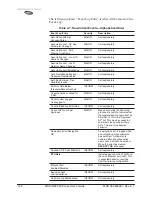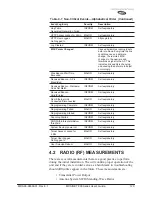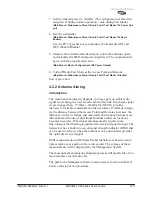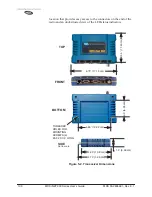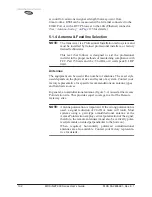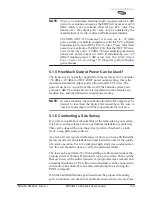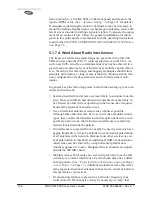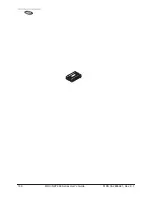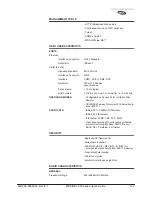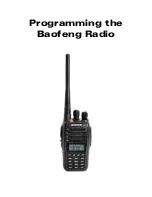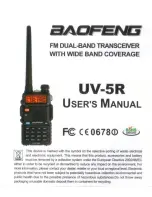
136
MDS iNET 900 Series User’s Guide
MDS 05-2806A01, Rev. E.1
station (shown by a lit
LINK
LED on the front panel) and measure the
reported RSSI value. (
See “Antenna Aiming” on Page 125
for details.)
If adequate signal strength cannot be obtained, it may be necessary to
mount the station antennas higher, use higher gain antennas, select a dif-
ferent site or consider installing a repeater station. To prepare the equip-
ment for an on-the-air test, follow the general installation procedures
given in this guide and become familiar with the operating instructions
found in the
CHAPTER-3 EMBEDDED MANAGEMENT SYSTEM
sec-
tion Page 25
.
5.1.7 A Word About Radio Interference
The transceiver shares the radio-frequency spectrum with other 900
MHz services and other Part 15 (unlicensed) devices in the USA. As
such, near 100% error-free communications may not be achieved in a
given location, and some level of interference should be expected. How-
ever, the radio’s flexible design and hopping techniques should allow
adequate performance as long as care is taken in choosing station loca-
tion, configuration of radio parameters and software/protocol tech-
niques.
In general, keep the following points in mind when setting up your com-
munications network.
• Systems installed in rural areas are least likely to encounter interfer-
ence; those in suburban and urban environments are more likely to
be affected by other devices operating in the license-free frequency
band and by adjacent licensed services.
• Use a directional antenna at remote sites whenever possible.
Although these antennas may be more costly than omnidirectional
types, they confine the transmission and reception pattern to a com-
paratively narrow lobe, that minimizes interference to (and from)
stations located outside the pattern.
• If interference is suspected from a nearby licensed system (such as a
paging transmitter), it may be helpful to use horizontal polarization
of all antennas in the network. Because most other services use ver-
tical polarization in this band, an additional 20 dB of attenuation to
interference can be achieved by using horizontal polarization.
Another approach is to use a bandpass filter to attenuate all signals
outside the 900 MHz band.
• Multiple Access Point units can co-exist in proximity to each other
with only very minor interference. Each network name has a differ-
ent hop pattern. (
See “Protected Network Operation using Multiple
Access Points” on Page 12
.) Additional isolation can be achieved by
using separate directional antennas with as much vertical or horizon-
tal separation as is practical.
• If constant interference is present in a particular frequency zone
(collection of 8 RF channels), it may be necessary to “skip” that
Содержание iNET 900 Series
Страница 10: ...2 MDS iNET 900 Series User s Guide MDS 05 2806A01 Rev E 1 ...
Страница 26: ...18 MDS iNET 900 Series User s Guide MDS 05 2806A01 Rev E 1 ...
Страница 118: ...110 MDS iNET 900 Series User s Guide MDS 05 2806A01 Rev E 1 ...
Страница 120: ...112 MDS iNET 900 Series User s Guide MDS 05 2806A01 Rev E 1 ...
Страница 136: ...128 MDS iNET 900 Series User s Guide MDS 05 2806A01 Rev E 1 ...
Страница 148: ...140 MDS iNET 900 Series User s Guide MDS 05 2806A01 Rev E 1 ...
Страница 150: ...142 MDS iNET 900 Series User s Guide MDS 05 2806A01 Rev E 1 ...
Страница 164: ...156 MDS iNET 900 Series User s Guide MDS 05 2806A01 Rev E 1 ...
Страница 172: ...164 MDS iNET 900 Series User s Guide MDS 05 2806A01 Rev E 1 ...

